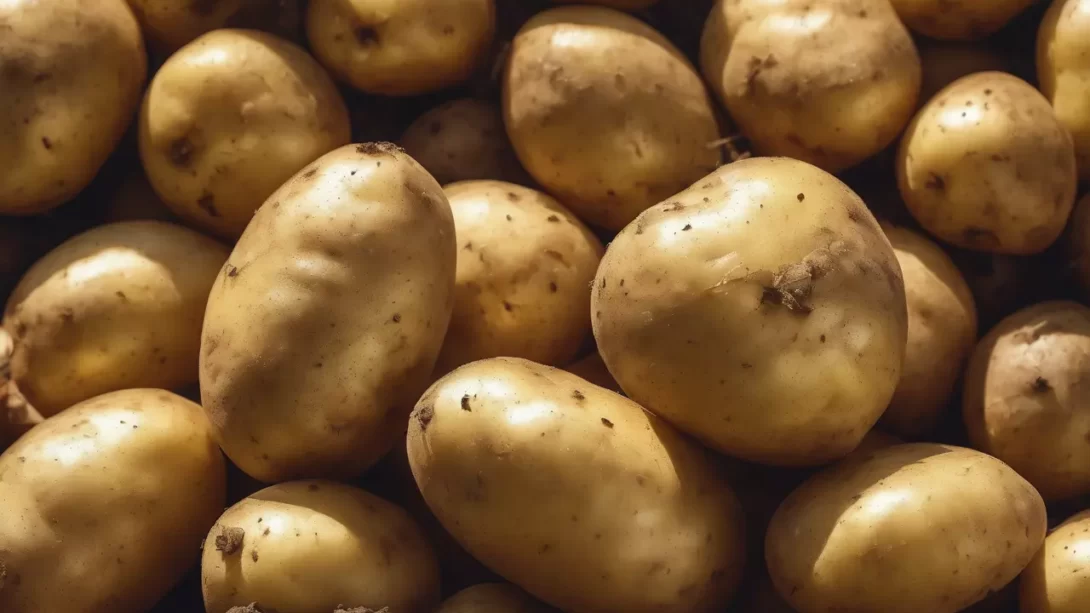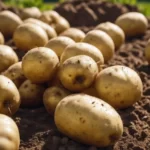Potatoes are a staple in many Arkansas gardens, valued for their versatility and ease of growing. The key to a bountiful potato harvest lies in planting at the correct time. This article aims to guide Arkansas gardeners through the optimal planting schedule for potatoes, considering the state’s specific climate conditions.
Arkansas’s Climate
Arkansas enjoys a humid subtropical climate, characterized by hot summers and mild winters. This climate is conducive to growing a wide range of vegetables, including potatoes. The state is segmented into different planting zones, each with slightly varying environmental conditions. These zones play a crucial role in determining the best planting times for potatoes.
Given Arkansas’s climate, the growing season typically starts earlier and extends longer than in more northern states. This extended season allows for greater flexibility in planting and harvesting times for various crops.
Ideal Planting Times for Potatoes in Arkansas
In Arkansas, the prime time for planting potatoes is in early to mid-spring. The goal is to plant after the risk of hard frost has passed but before the heat of summer sets in. This window usually falls between late February and early April, depending on the specific region within the state.
For gardeners eager to harvest potatoes early, late February to early March is the ideal planting period. This timing allows for the potatoes to develop before the summer heat peaks. For those planting mid-season or late-season varieties, which require more time to mature, planting can be done as late as early April.
Choosing Potato Varieties for Arkansas
Selecting the right potato varieties is crucial for a successful harvest in Arkansas’s climate. The state’s growing conditions are suitable for a range of potato types, including early, mid, and late-season varieties. Early-season potatoes, like ‘Yukon Gold’ and ‘Red Norland’, are ideal for gardeners looking for a quick harvest, usually maturing in 70 to 90 days.
Mid-season varieties, such as ‘Kennebec’ and ‘Gold Rush’, offer a balance between early and late harvest times, typically maturing in 90 to 110 days. These are great for gardeners who prefer a steady supply throughout the growing season.
Late-season varieties like ‘Russet Burbank’ and ‘Canela Russet’ require a longer growing period, usually 110 to 135 days, but are excellent for storage. When choosing varieties, consider factors like disease resistance, especially to issues prevalent in Arkansas, such as blight and scab, as well as your culinary preferences.
Soil Preparation and Site Selection
For the best growth, potatoes require well-drained, loamy soil with a slightly acidic pH, ideally between 5.0 and 6.5. Enhancing your garden bed with organic matter, such as compost or aged manure, can improve soil fertility and structure. Conducting a soil test before planting can provide insights into any necessary amendments.
Choosing a sunny location for your potato garden is crucial, as potatoes need plenty of direct sunlight to grow well. Avoid areas where water tends to collect, as excessive moisture can lead to root diseases. Rotating your potato crops each year can also help prevent soil-borne diseases.
Planting Process for Potatoes
When planting potatoes in Arkansas, start with seed potatoes or small whole potatoes. Use certified seed potatoes to reduce the risk of disease. If using larger seed potatoes, cut them into pieces, each with one or two eyes (buds), a day or two before planting to allow the cut surfaces to callous over.
Plant the potato pieces about 3 to 4 inches deep and 12 inches apart in rows. Space the rows about 2 to 3 feet apart to allow for growth and hilling. Cover the seed potatoes with soil and water them in well.
Hilling is crucial in potato cultivation. As the plants grow, gradually mound soil around the stems, leaving only the top few inches exposed. This process, known as hilling, helps prevent sunlight exposure to the developing tubers, which can cause them to turn green and become toxic.
Care and Maintenance of Potato Plants
Once your potatoes are planted, consistent care is key to a healthy and productive crop. Potatoes require regular watering, especially during the critical tuber formation stage. Aim for about 1 to 2 inches of water per week, ensuring even moisture but avoiding over-saturation which can lead to root diseases.
Fertilization is important for potato growth. Start with a balanced fertilizer at planting and consider a side dressing of a potassium-rich fertilizer as the plants begin to flower. This helps in developing strong tubers. Be cautious with nitrogen-heavy fertilizers later in the season, as they can promote foliage growth at the expense of tubers.
Regular weeding is necessary, as potatoes compete poorly with weeds. However, be gentle around the plants to avoid disturbing their shallow root systems.
Common pests in Arkansas include the Colorado potato beetle and aphids, while diseases like blight and scab can also affect the crop. Regular inspection and timely intervention with appropriate organic or chemical controls are essential. Practicing crop rotation and good garden hygiene can help in preventing many of these issues.
Harvesting and Storing Your Potatoes
The right time to harvest potatoes in Arkansas typically arrives in late summer or early fall, when the foliage starts to yellow and die back. For new potatoes, which are smaller and more tender, you can begin harvesting a few weeks after the plants have finished flowering.
Use a spade or fork to gently unearth the potatoes, being careful not to damage them. Let the potatoes dry for a few hours in a cool, dry place to remove excess soil.
For long-term storage, cure the potatoes in a dark, well-ventilated area for about two weeks. This process hardens their skins and prepares them for storage. Store the cured potatoes in a cool, dark place, such as a cellar or a pantry, to extend their shelf life.
Conclusion
Growing potatoes in Arkansas can be a rewarding experience for gardeners of all levels. By understanding the best planting times, selecting appropriate varieties, and providing proper care and maintenance, you can enjoy a successful harvest of this versatile vegetable. Whether for immediate consumption or long-term storage, potatoes offer a satisfying addition to any Arkansas garden.



